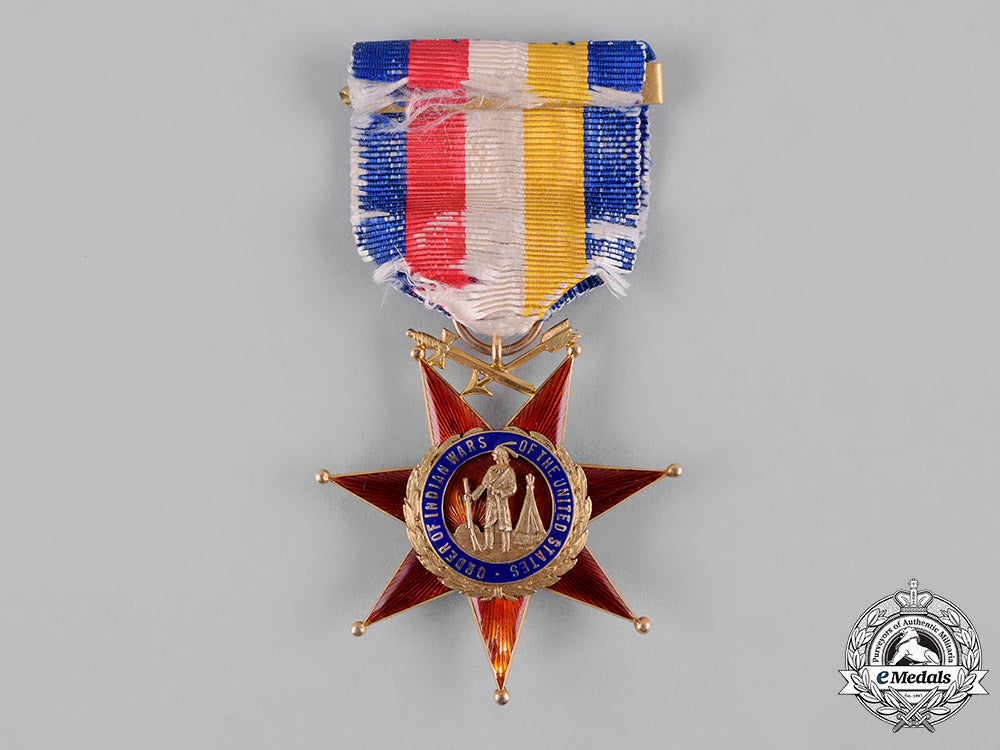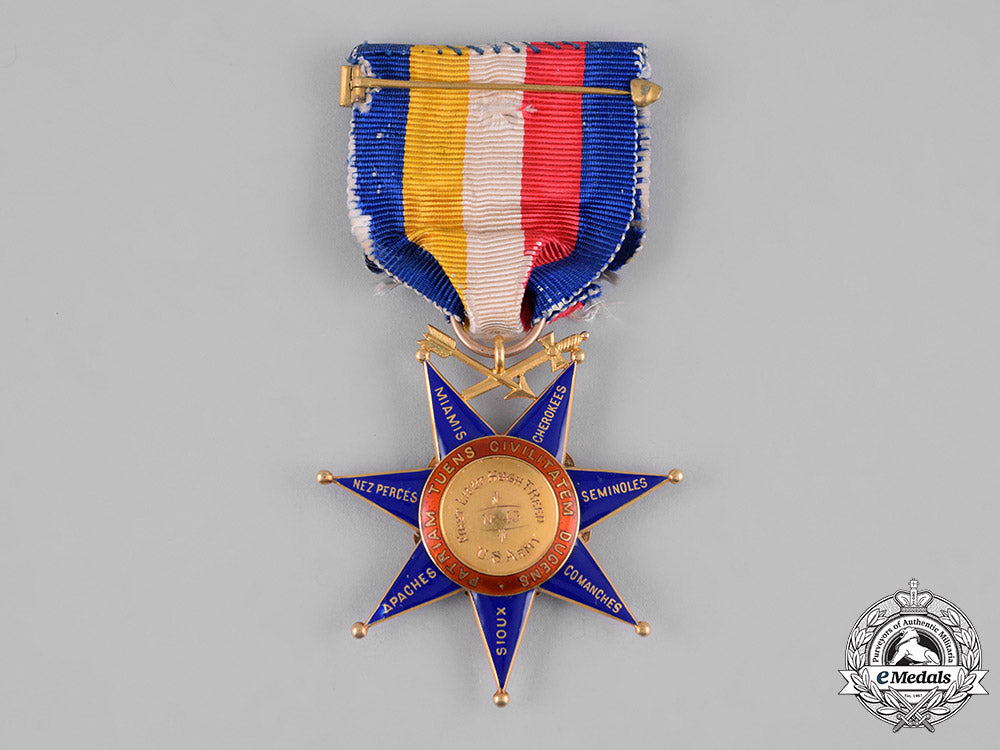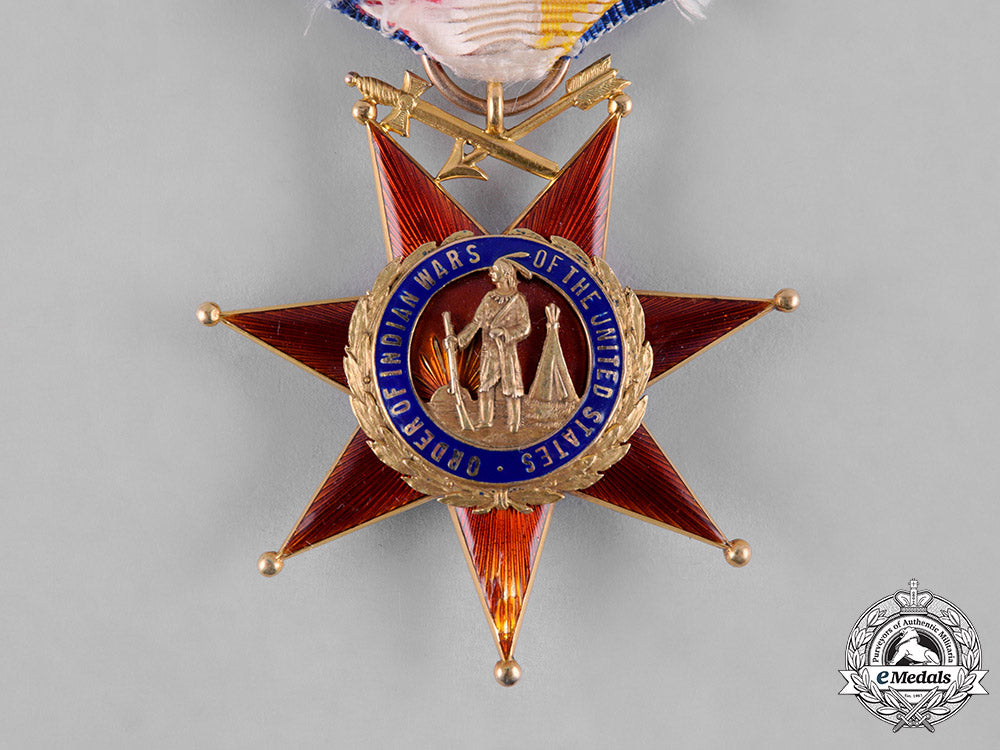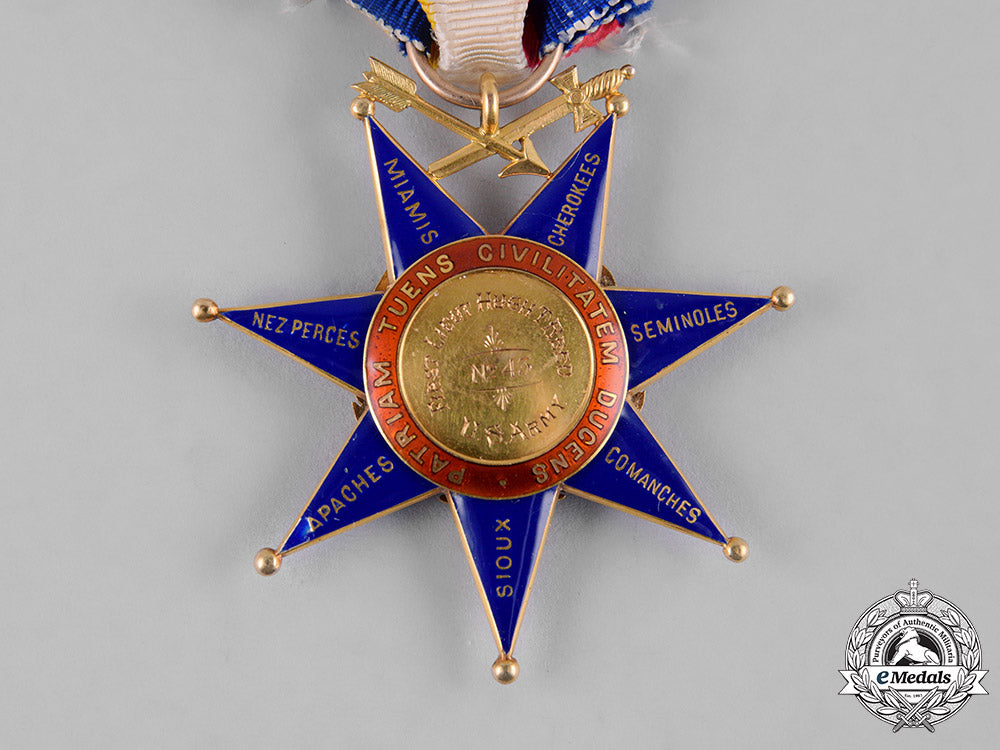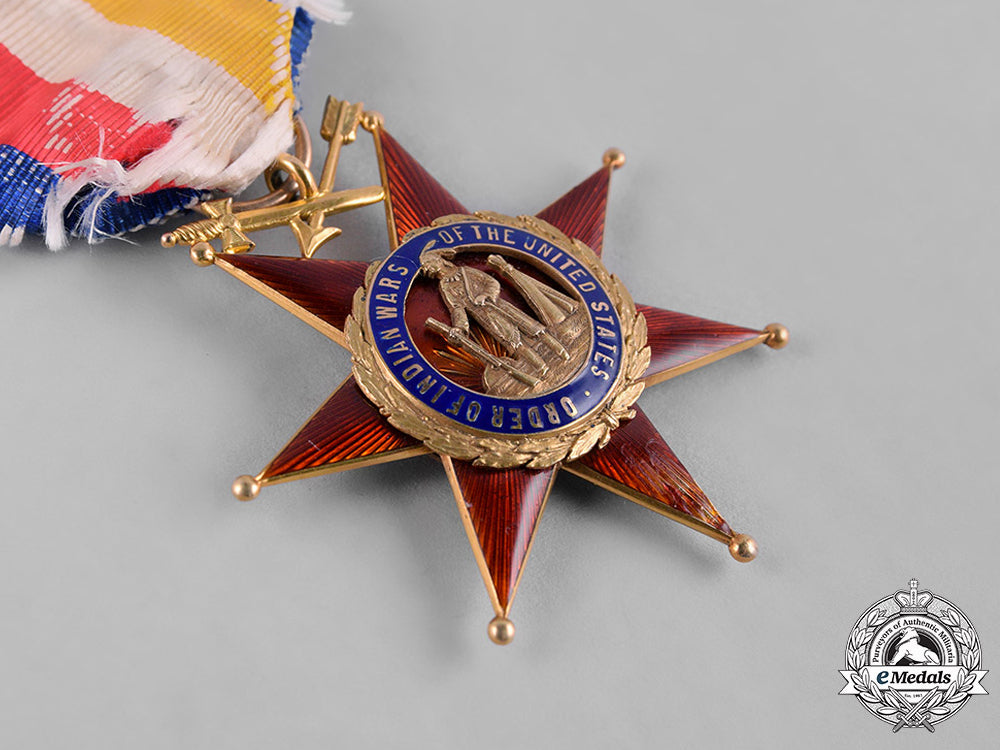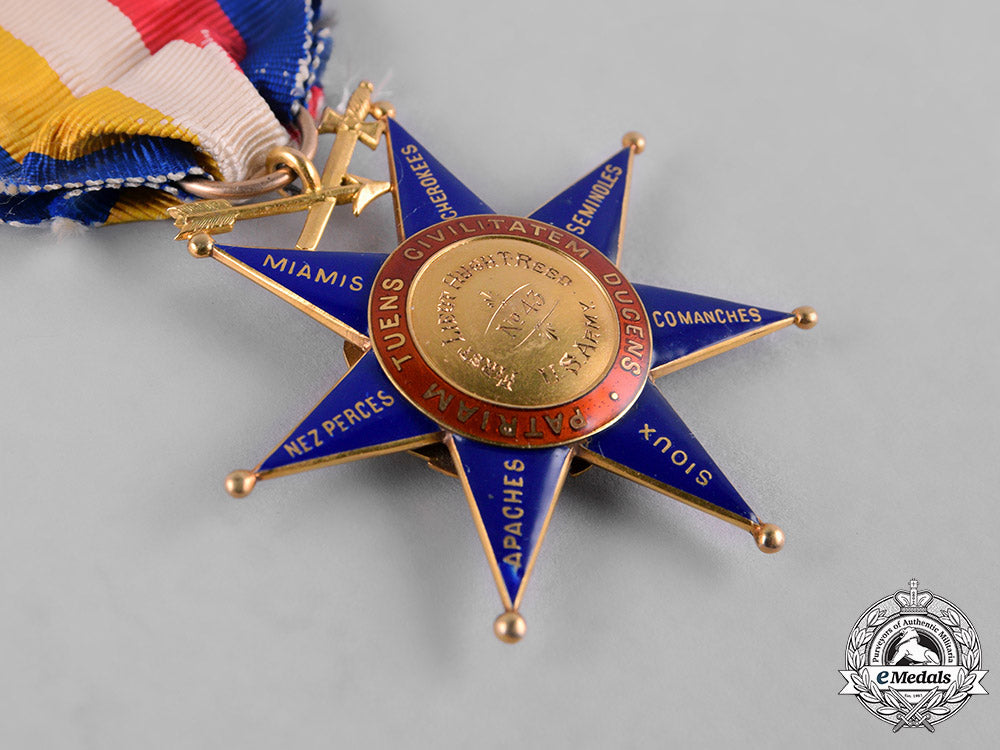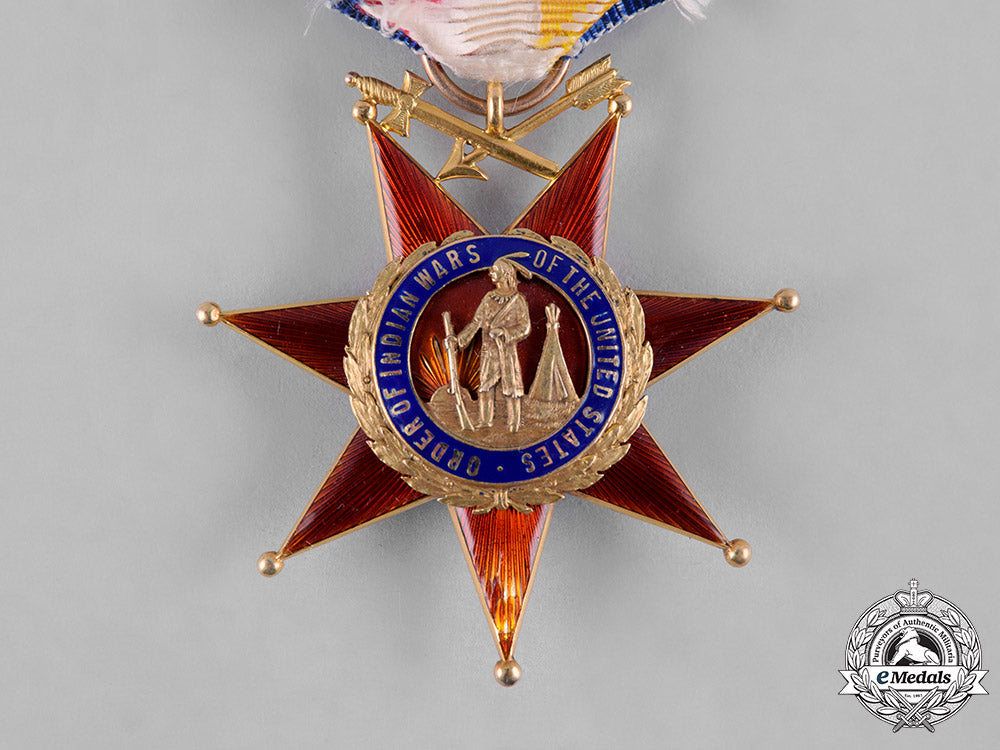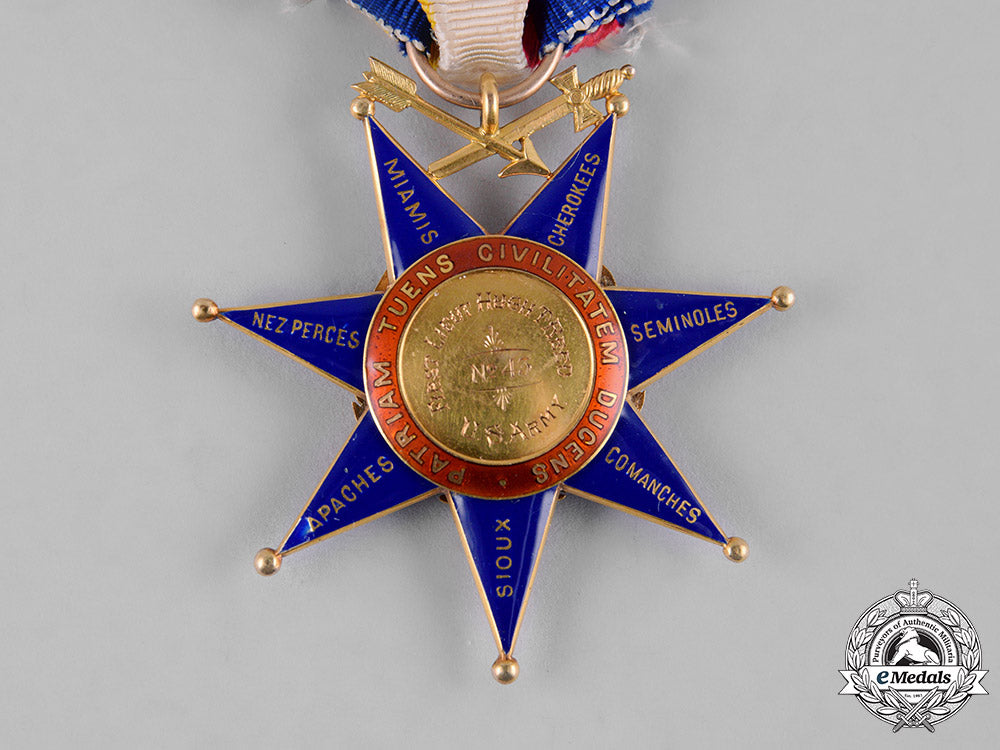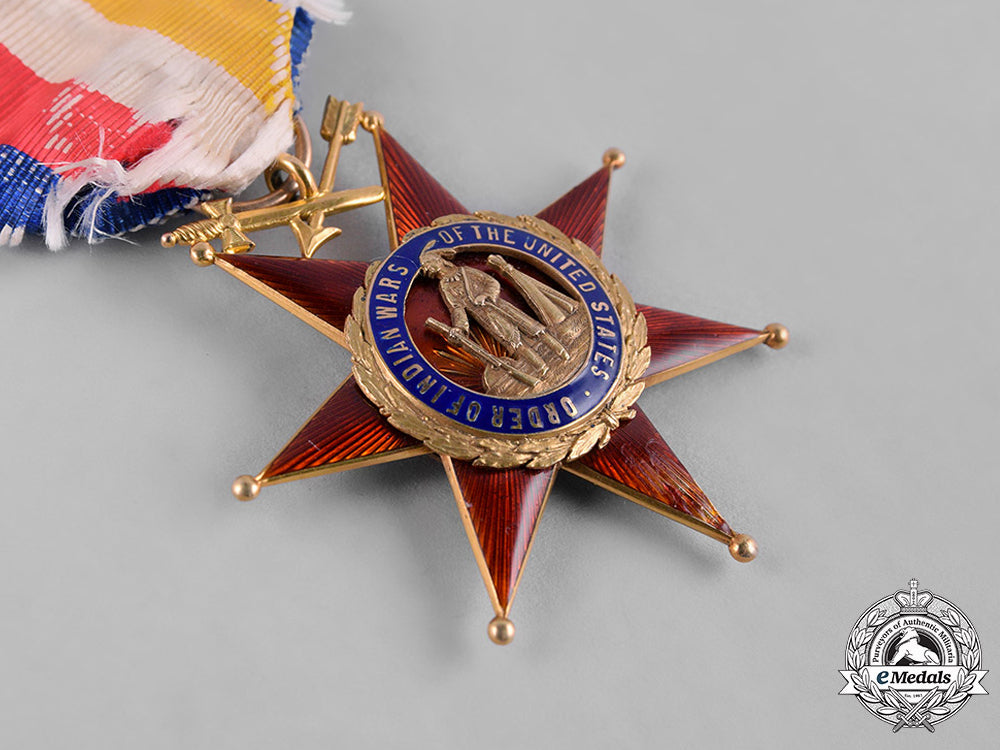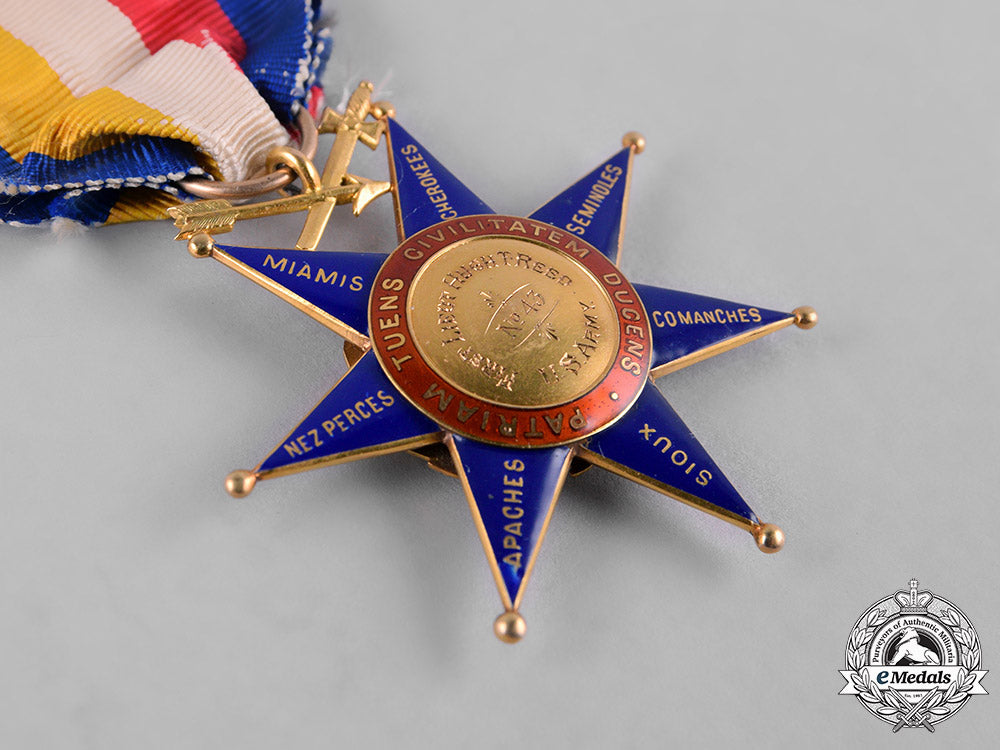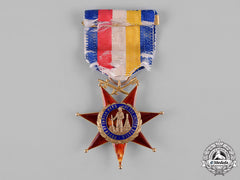
LOADING ...
In response to evolving domestic opinion, eMedals Inc has made the conscious decision to remove the presentation of German Third Reich historical artifacts from our online catalogue. For three decades, eMedals Inc has made an effort to preserve history in all its forms. As historians and researchers, we have managed sensitive articles and materials with the greatest of care and respect for their past and present social context. We acknowledge the growing sentiments put forth by the Canadian public and have taken proactive actions to address this opinion.
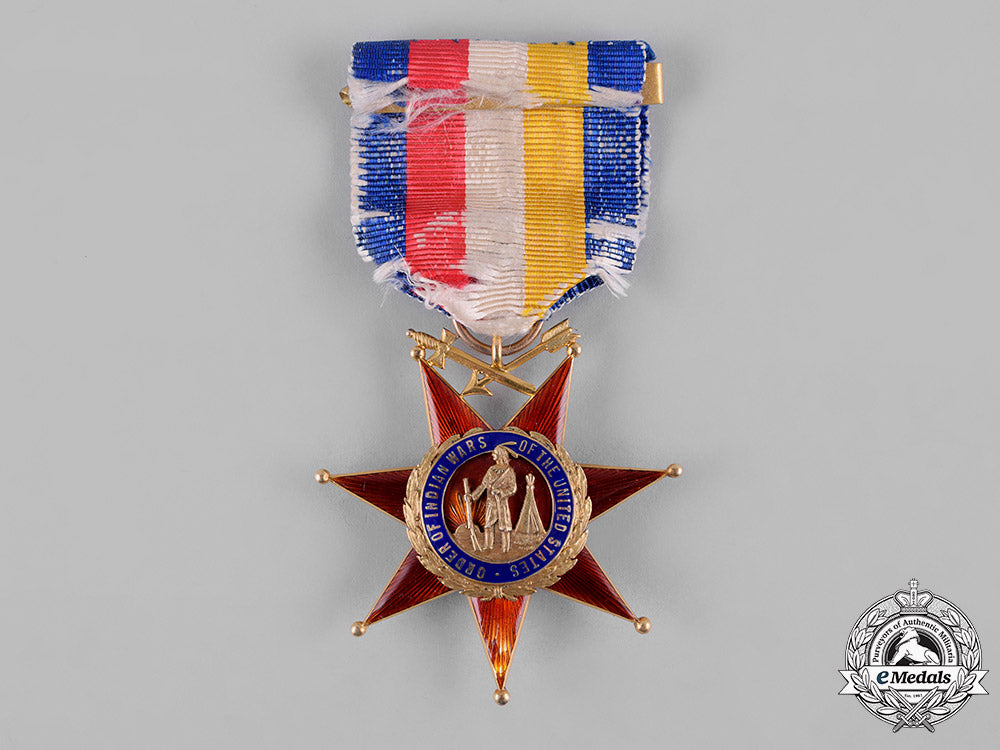
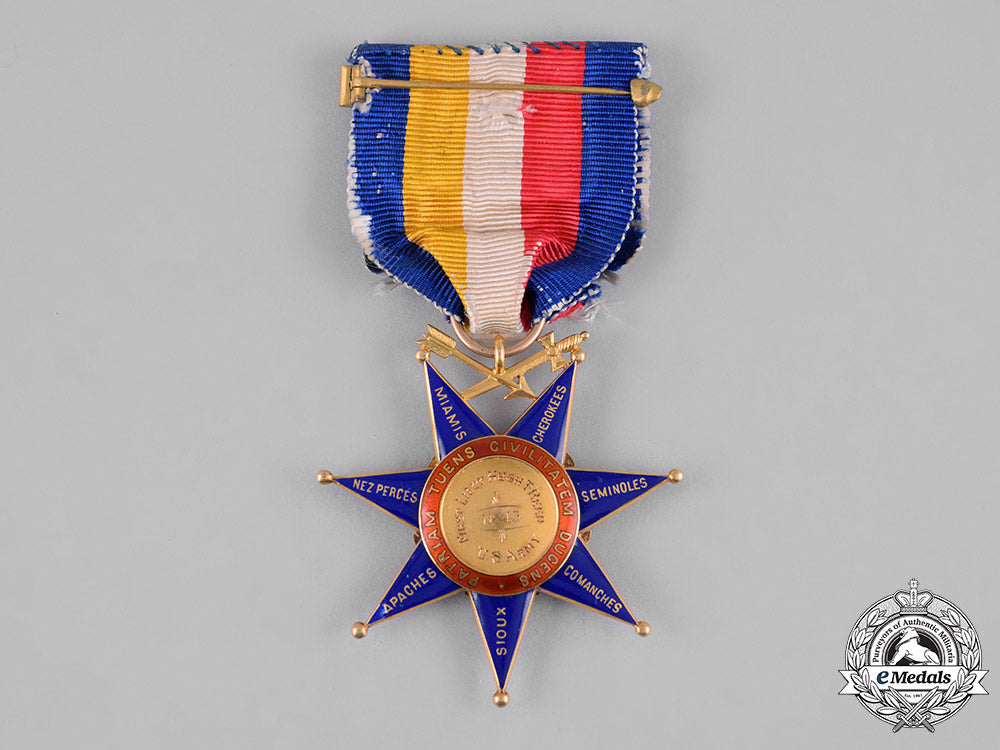
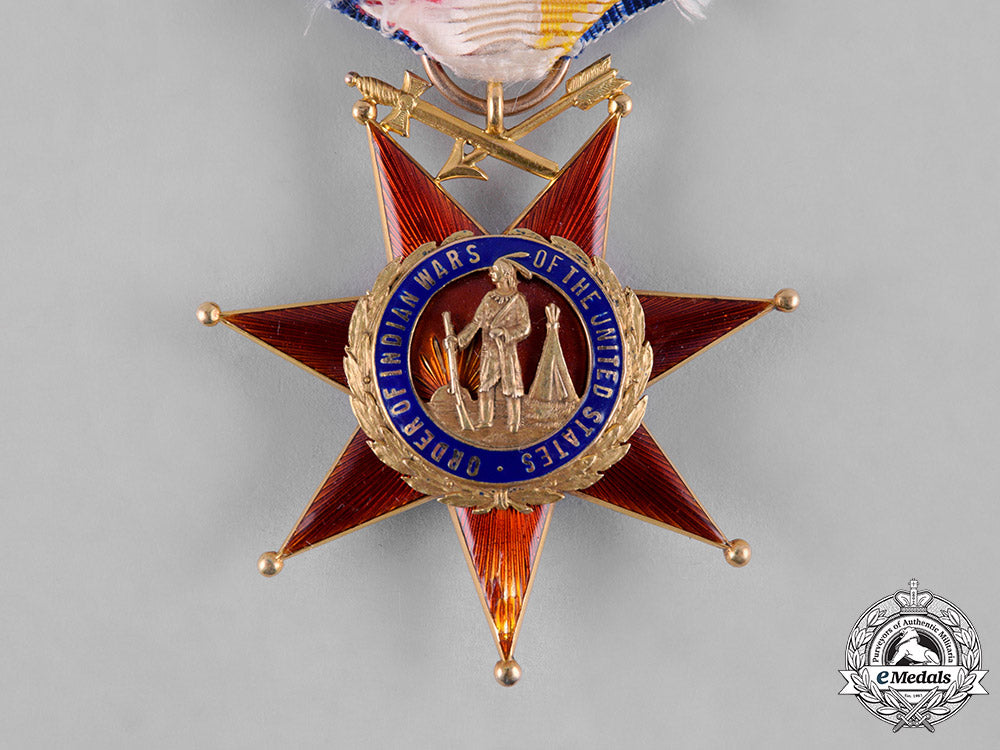
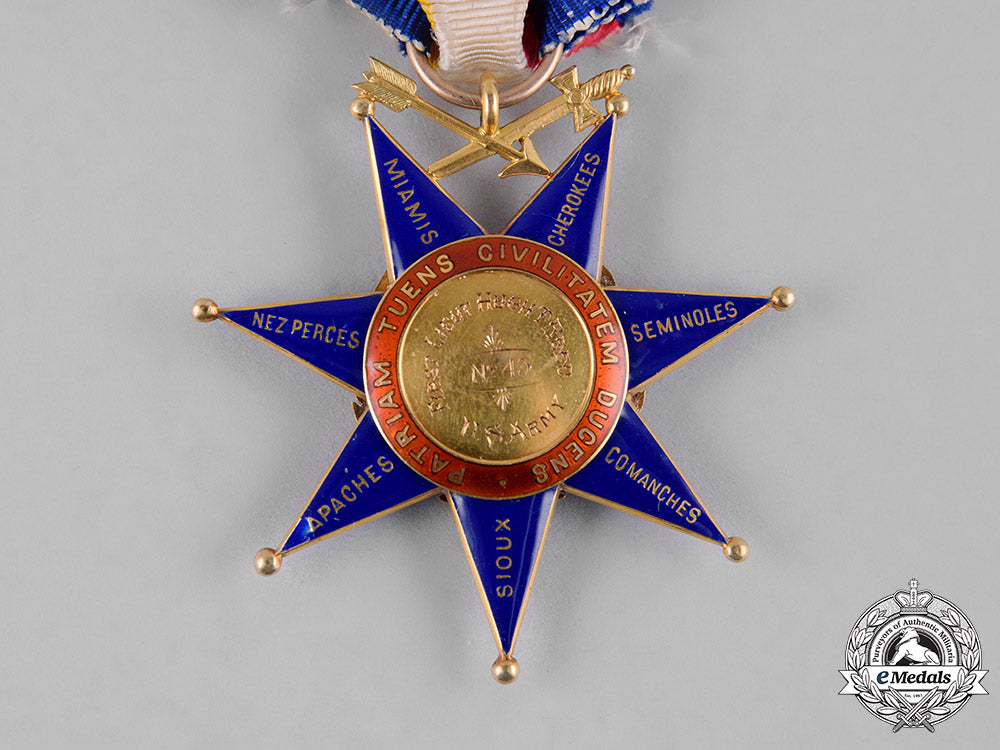
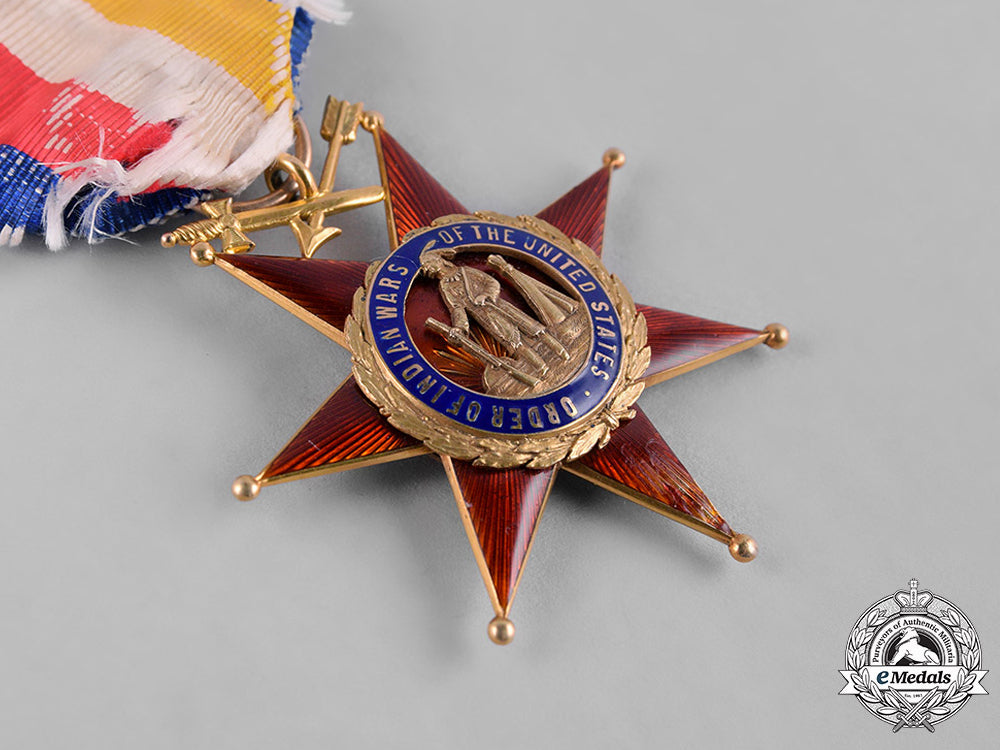
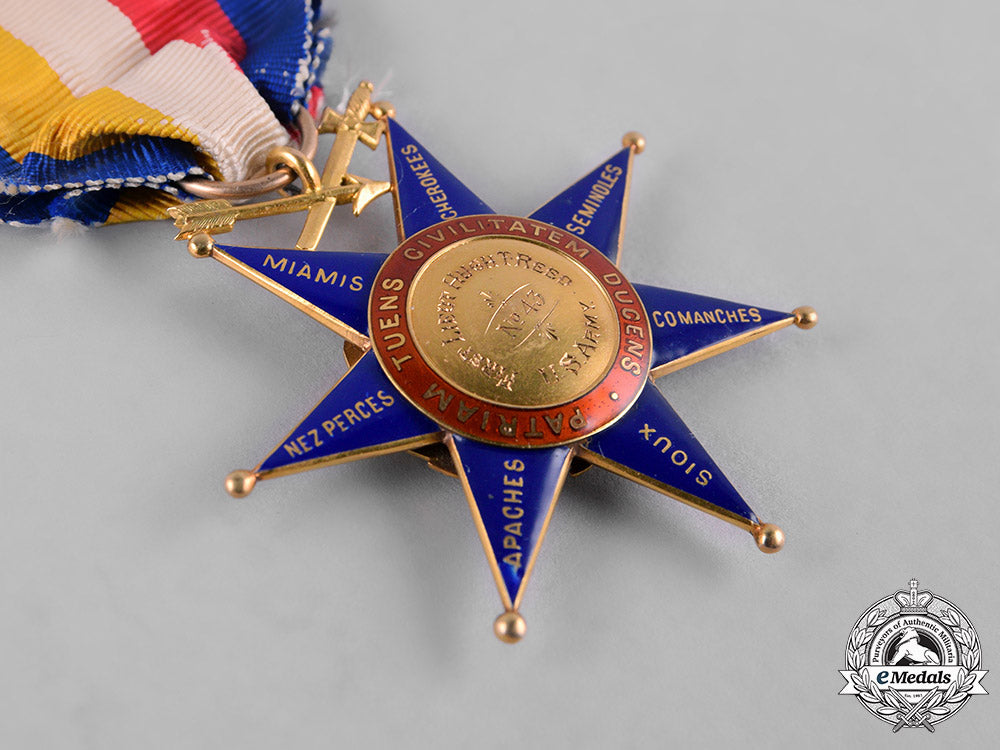
United States. An Order Of The Indian Wars (Oiwus) In Gold, To First Lieutenant/Colonel Hugh T. Reed
United States. An Order Of The Indian Wars (Oiwus) In Gold, To First Lieutenant/Colonel Hugh T. Reed
SKU: ITEM: M0041-210
0% Buyer's Premium
Current Bid:
Your Max Bid:
Bid History:
Time Remaining:
Couldn't load pickup availability
Shipping Details
Shipping Details
eMedals offers rapid domestic and international shipping. Orders received prior to 12:00pm (EST) will be shipped on the same business day.* Orders placed on Canadian Federal holidays will be dispatched the subsequent business day. Courier tracking numbers are provided for all shipments. All items purchased from eMedals can be returned for a full monetary refund or merchandise credit, providing the criteria presented in our Terms & Conditions are met. *Please note that the addition of a COA may impact dispatch time.
Shipping Details
eMedals offers rapid domestic and international shipping. Orders received prior to 12:00pm (EST) will be shipped on the same business day.* Orders placed on Canadian Federal holidays will be dispatched the subsequent business day. Courier tracking numbers are provided for all shipments. All items purchased from eMedals can be returned for a full monetary refund or merchandise credit, providing the criteria presented in our Terms & Conditions are met. *Please note that the addition of a COA may impact dispatch time.
Description
Description
Of Three-piece construction, in 14K Gold with red and blue enamels, weighing 17.3 grams inclusive of its ribbon and pinback, obverse with a centrepiece illustrating a standing Native American, a sunrise to the left and a teepee to the right, surrounded by the inscription ORDER OF INDIAN WARS OF THE UNITED STATES, inside an open-ended wreath of laurel leaves, reverse centrepiece engraved FIRST LIEUT HUGH T. REED NO. 43 U.S. ARMY, surrounded by the Latin inscription PATRIAM TUENS CIVILITATEM DUCENS, the seven arms inscribed with various Native tribe names, clockwise from the bottom: SIOUX, APACHES, NEZ PERCÉS, MIAMIS, CHEROKEES, SEMINOLES, COMANCHES, crossed sword and arrow between the top two arms, measuring 43.59 mm (w) x 45.81 mm (h - inclusive of its crossed sword and arrow suspension), majority intact enamels with some loss to the lower obverse arm, original ribbon with brooch pinback, extremely fine.
Footnote: Hugh T. Reed was born in Richmond, Indiana on 17 August 1850. On 8 June 1869, he reported at West Point as a cadet in the United States Military Academy from which he graduated on 13 June 1873, receiving on the same day the appointment of Second Lieutenant First United States Infantry, stationed at Fort Gratiot, Michigan. In July 1874, Reed went to Fort Sully, Dakota Territory and the next spring he commanded a detachment on field service to prevent people from going to Yankton (then a western railroad terminal) via the old Fort Pierre trail to the Black Hills (then Sioux Indian country). After the discovery of gold in the Black Hills, a treaty was signed giving the country to the United States. Reed commanded B Company from April 1876 until 13 December 1877 and most of that time the company was on duty in the field against the Sioux. The 1877 campaign ended by the capture of Chief Joseph and his band of Nez Perces Indians in Montana and B Company was one of two companies that escorted those captured from Bismark, Dakota Territory via rail to Fort Leavenworth, Kansas.
From 1878 to 1879, Reed attended Signal School at Fort Myer, Virginia as a student officer. In 1879, as a First Lieutenant, he returned to Dakota, going to Fort Randall. From 1880 to 1883, Reed was Professor of Military Science and Tactics at the Southern Illinois Normal University. He married Sallie Ferguson on 5 September 1882 in Indianapolis. In August 1883, Reed transferred to Fort Apache, Arizona Territory to again command Company B, this time on survey of the White Mountain Indian reservation. In November, he took command of I Company in Fort Lowell near Tucson. Reed held the offices of Post Adjutant and Post Quartermaster at Fort Lowell during a change in station by the cavalry of part of the garrison. His next and last station was at San Diego, California. On 23 April 1889, Reed retired. From 12 August 1897 to 31 August 1905, he was Professor of Military Science and Tactics at the Howe School, Lima, Indiana.
He was Colonel of Reed’s Provisional Regiment of Infantry Illinois Volunteers raised for the Spanish American War and upon recommendation, by a majority of the Illinois Congressional Delegation by General E.A. Carr and by scores of other prominent men in Illinois, Indiana, Michigan, New Jersey, California and Oregon, he was appointed a Brigadier General of Volunteers May 1898. The appointment papers were maliciously destroyed in the Appointment Division of the War Department. In 1917 he was recommended for appointment as a Brigadier General of Volunteers in the World War by prominent people of Indiana and Florida and in 1918 he was recommended for high rank in the United States Guards by Generals F.S. Strong and C.G. Treat and 12 June 1918 the Secretary of War wrote General Strong that on account of age it is impossible to commission him (Reed) in active service in the World War.
Captain Reed was an honorary member of Richmond (Indiana) Light Guards in 1878, honorary member Indianapolis Light Infantry in 1880, the Inspector General of Indiana 1881-1882, Brigadier General Knights of the Globe in 1896, Chief Engineer Illinois National Guard in 1896, Colonel on the staff of Governor Durbin of Indiana 1901-1903, declined an appointment on the staff of Governor Jennings of Florida in 1905, Colonel on the staff of Governor Mead of Washington 1908-1909. For years Captain Reed helped to organize civic and military parades in Chicago and for organizing in forty-right hours a large McKinley memorial parade in 1901 the Common Council of Chicago gave him a vote of thanks.
While among the Sioux Indians Captain Reed collected the principal data for a paper on Pictographs of the North American Indians published by Captain Garrick Mallery. Captain Reed authored Signal Tactics, Cadet Regulations, Infantry Tactics, Light Artillery Tactics, Military Science and Tactics, Broom Tactics, Knights of the Globe Tactics, Cadet Life at West Point, a paper on the Mexican Military Academy and a paper on United States Seals. Between 1880 and 1892 more than a million men and thousands of women drilled by Reed’s Tactics. For a few years he was his own publisher and one day he sold over eighteen thousand books.
He patented a fountain pen, a folding chess and checker board that packs in a box with the men, a pocket case for eye glasses, a pencil, visiting cards and small change, a perpetual calendar and he is the pioneer patentee of metallic shelving now in general use in libraries and vaults.
Member of the Association of Graduates of the United States Military Academy and of the Order of Indian Wars – awarded a medal by the United States for Indian War service, complimentary member of the Union League and Kenwood Clubs of Chicago.
Captain Reed died 29 November 1934, at Great Barrington, Massachusetts.
Description
Of Three-piece construction, in 14K Gold with red and blue enamels, weighing 17.3 grams inclusive of its ribbon and pinback, obverse with a centrepiece illustrating a standing Native American, a sunrise to the left and a teepee to the right, surrounded by the inscription ORDER OF INDIAN WARS OF THE UNITED STATES, inside an open-ended wreath of laurel leaves, reverse centrepiece engraved FIRST LIEUT HUGH T. REED NO. 43 U.S. ARMY, surrounded by the Latin inscription PATRIAM TUENS CIVILITATEM DUCENS, the seven arms inscribed with various Native tribe names, clockwise from the bottom: SIOUX, APACHES, NEZ PERCÉS, MIAMIS, CHEROKEES, SEMINOLES, COMANCHES, crossed sword and arrow between the top two arms, measuring 43.59 mm (w) x 45.81 mm (h - inclusive of its crossed sword and arrow suspension), majority intact enamels with some loss to the lower obverse arm, original ribbon with brooch pinback, extremely fine.
Footnote: Hugh T. Reed was born in Richmond, Indiana on 17 August 1850. On 8 June 1869, he reported at West Point as a cadet in the United States Military Academy from which he graduated on 13 June 1873, receiving on the same day the appointment of Second Lieutenant First United States Infantry, stationed at Fort Gratiot, Michigan. In July 1874, Reed went to Fort Sully, Dakota Territory and the next spring he commanded a detachment on field service to prevent people from going to Yankton (then a western railroad terminal) via the old Fort Pierre trail to the Black Hills (then Sioux Indian country). After the discovery of gold in the Black Hills, a treaty was signed giving the country to the United States. Reed commanded B Company from April 1876 until 13 December 1877 and most of that time the company was on duty in the field against the Sioux. The 1877 campaign ended by the capture of Chief Joseph and his band of Nez Perces Indians in Montana and B Company was one of two companies that escorted those captured from Bismark, Dakota Territory via rail to Fort Leavenworth, Kansas.
From 1878 to 1879, Reed attended Signal School at Fort Myer, Virginia as a student officer. In 1879, as a First Lieutenant, he returned to Dakota, going to Fort Randall. From 1880 to 1883, Reed was Professor of Military Science and Tactics at the Southern Illinois Normal University. He married Sallie Ferguson on 5 September 1882 in Indianapolis. In August 1883, Reed transferred to Fort Apache, Arizona Territory to again command Company B, this time on survey of the White Mountain Indian reservation. In November, he took command of I Company in Fort Lowell near Tucson. Reed held the offices of Post Adjutant and Post Quartermaster at Fort Lowell during a change in station by the cavalry of part of the garrison. His next and last station was at San Diego, California. On 23 April 1889, Reed retired. From 12 August 1897 to 31 August 1905, he was Professor of Military Science and Tactics at the Howe School, Lima, Indiana.
He was Colonel of Reed’s Provisional Regiment of Infantry Illinois Volunteers raised for the Spanish American War and upon recommendation, by a majority of the Illinois Congressional Delegation by General E.A. Carr and by scores of other prominent men in Illinois, Indiana, Michigan, New Jersey, California and Oregon, he was appointed a Brigadier General of Volunteers May 1898. The appointment papers were maliciously destroyed in the Appointment Division of the War Department. In 1917 he was recommended for appointment as a Brigadier General of Volunteers in the World War by prominent people of Indiana and Florida and in 1918 he was recommended for high rank in the United States Guards by Generals F.S. Strong and C.G. Treat and 12 June 1918 the Secretary of War wrote General Strong that on account of age it is impossible to commission him (Reed) in active service in the World War.
Captain Reed was an honorary member of Richmond (Indiana) Light Guards in 1878, honorary member Indianapolis Light Infantry in 1880, the Inspector General of Indiana 1881-1882, Brigadier General Knights of the Globe in 1896, Chief Engineer Illinois National Guard in 1896, Colonel on the staff of Governor Durbin of Indiana 1901-1903, declined an appointment on the staff of Governor Jennings of Florida in 1905, Colonel on the staff of Governor Mead of Washington 1908-1909. For years Captain Reed helped to organize civic and military parades in Chicago and for organizing in forty-right hours a large McKinley memorial parade in 1901 the Common Council of Chicago gave him a vote of thanks.
While among the Sioux Indians Captain Reed collected the principal data for a paper on Pictographs of the North American Indians published by Captain Garrick Mallery. Captain Reed authored Signal Tactics, Cadet Regulations, Infantry Tactics, Light Artillery Tactics, Military Science and Tactics, Broom Tactics, Knights of the Globe Tactics, Cadet Life at West Point, a paper on the Mexican Military Academy and a paper on United States Seals. Between 1880 and 1892 more than a million men and thousands of women drilled by Reed’s Tactics. For a few years he was his own publisher and one day he sold over eighteen thousand books.
He patented a fountain pen, a folding chess and checker board that packs in a box with the men, a pocket case for eye glasses, a pencil, visiting cards and small change, a perpetual calendar and he is the pioneer patentee of metallic shelving now in general use in libraries and vaults.
Member of the Association of Graduates of the United States Military Academy and of the Order of Indian Wars – awarded a medal by the United States for Indian War service, complimentary member of the Union League and Kenwood Clubs of Chicago.
Captain Reed died 29 November 1934, at Great Barrington, Massachusetts.
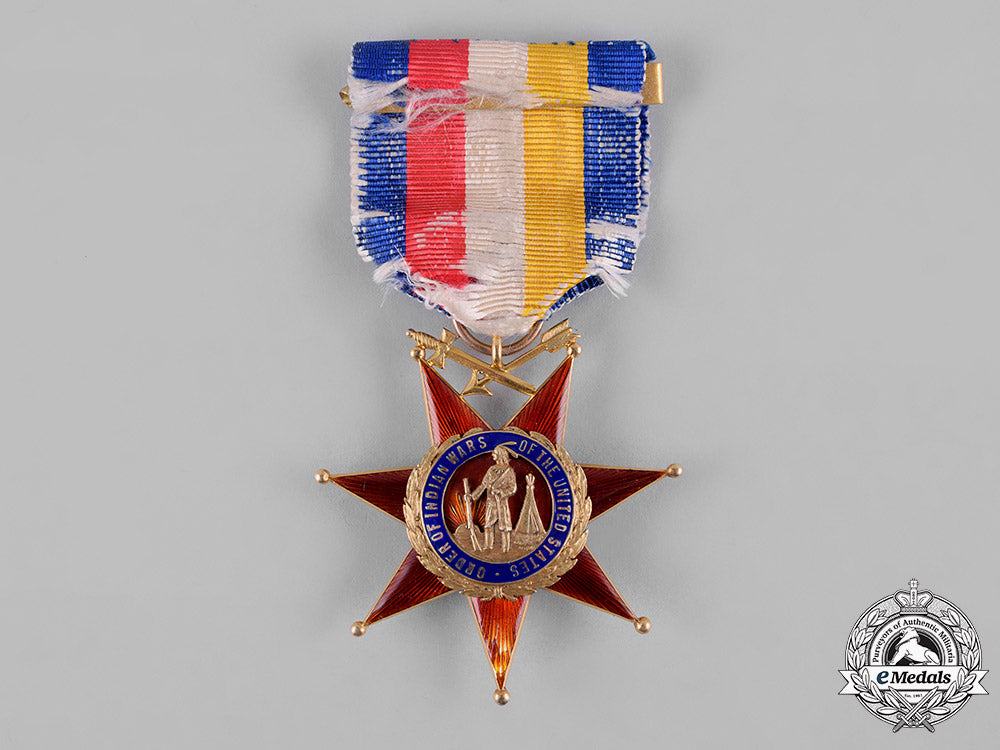

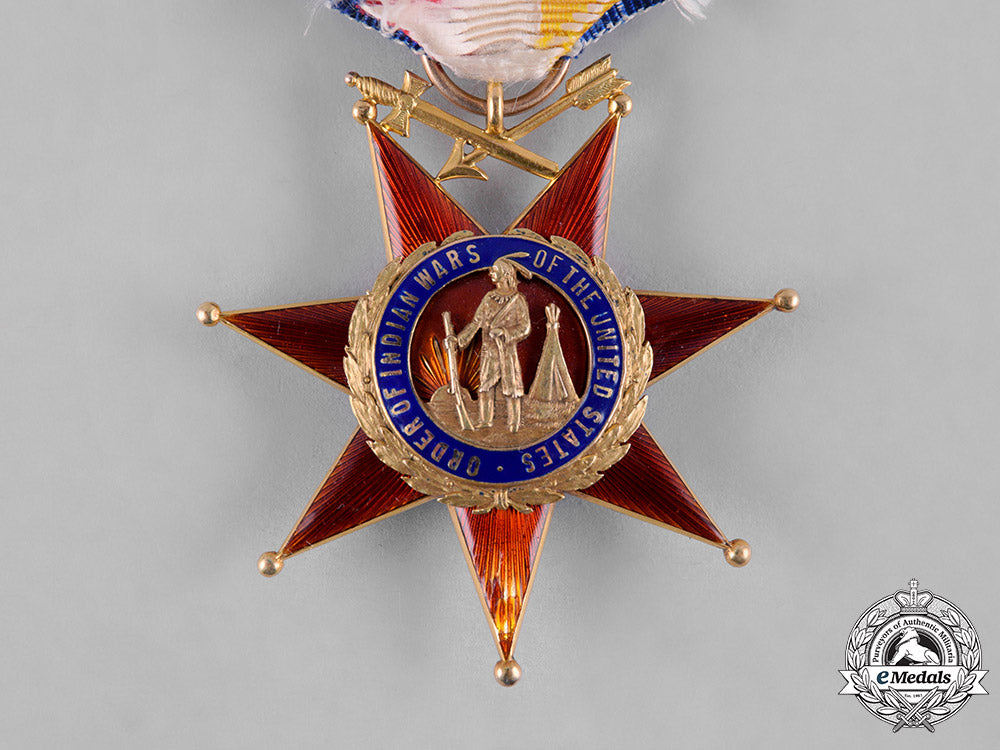

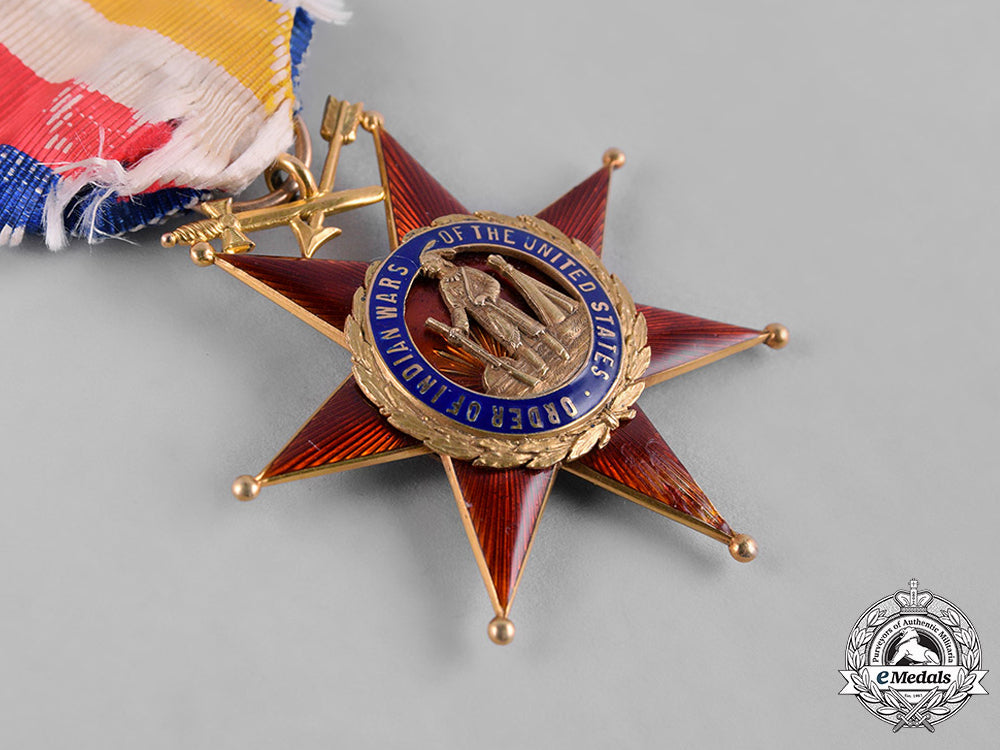

You May Also Like
Germany, Third Reich. A Mixed Lot of Tyrolean Marksmanship Badges
G52930
Germany, SS. An Estonian Waffen-SS Volunteer’s Sleeve Shield
G50381
Germany, SS. A Waffen-SS Sturmmann Sleeve Insignia
G52846
Germany, Third Reich; Slovakia, First Republic. A Mixed Lot of Wartime Postcards
G52905
Germany, Third Reich. A Pair of Tyrolean Marksmanship Badges
G52981
-
Germany, Third Reich. A Mixed Lot of Tyrolean Marksmanship Badges
G52930
Add to CartRegular price $135 USDRegular price $0 USD Sale price $135 USDUnit price / per -
Germany, SS. An Estonian Waffen-SS Volunteer’s Sleeve Shield
G50381
Add to CartRegular price $150 USDRegular price $0 USD Sale price $150 USDUnit price / per -
Germany, SS. A Waffen-SS Sturmmann Sleeve Insignia
G52846
Add to CartRegular price $135 USDRegular price $0 USD Sale price $135 USDUnit price / per -
Germany, Third Reich; Slovakia, First Republic. A Mixed Lot of Wartime Postcards
G52905
Add to CartRegular price $135 USDRegular price $0 USD Sale price $135 USDUnit price / per -
Germany, Third Reich. A Pair of Tyrolean Marksmanship Badges
G52981
Add to CartRegular price $135 USDRegular price $0 USD Sale price $135 USDUnit price / per
Do you have a similar item you are interested in selling?
Please complete the form and our client care representatives will contact you.
Sell Item